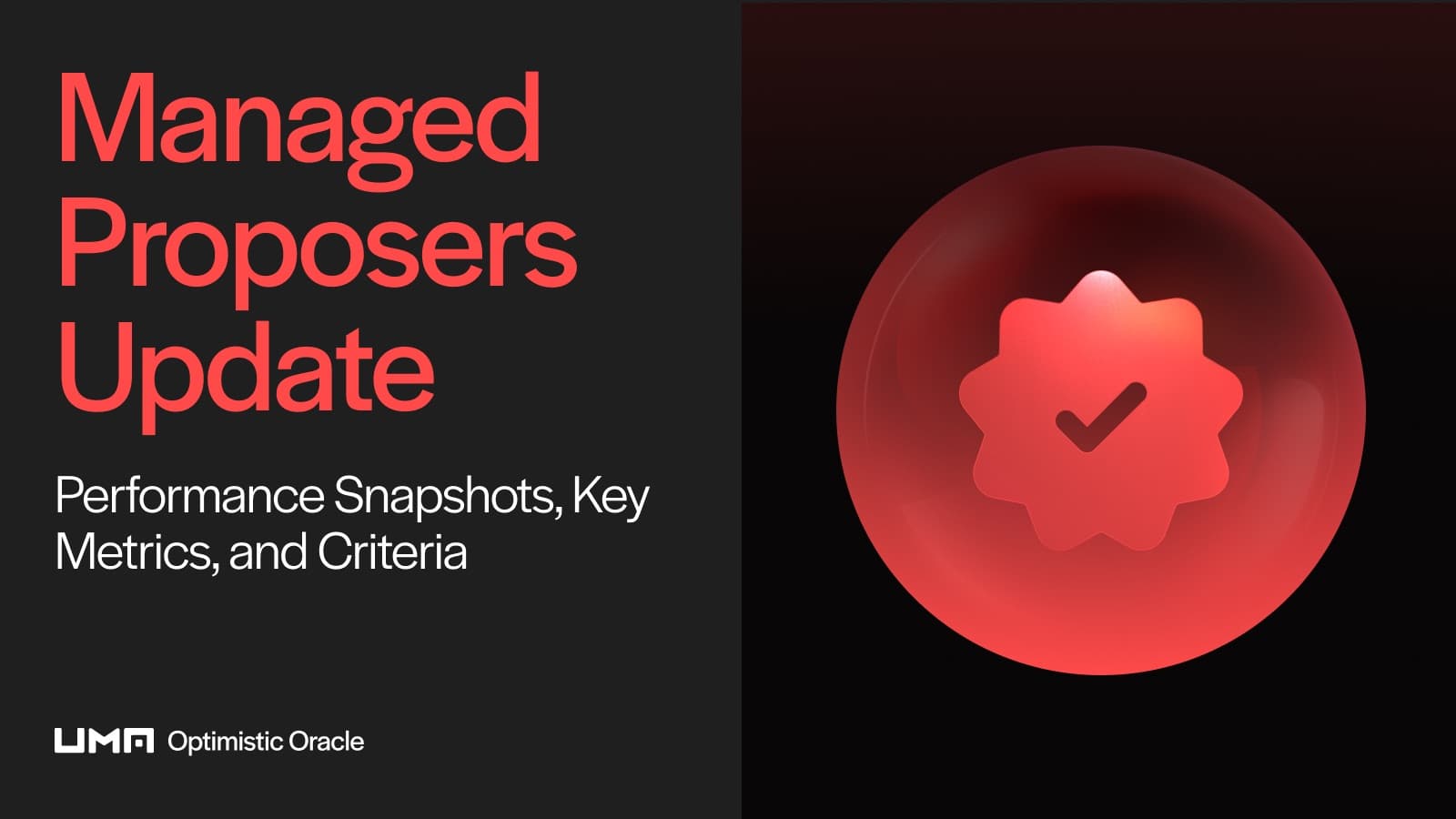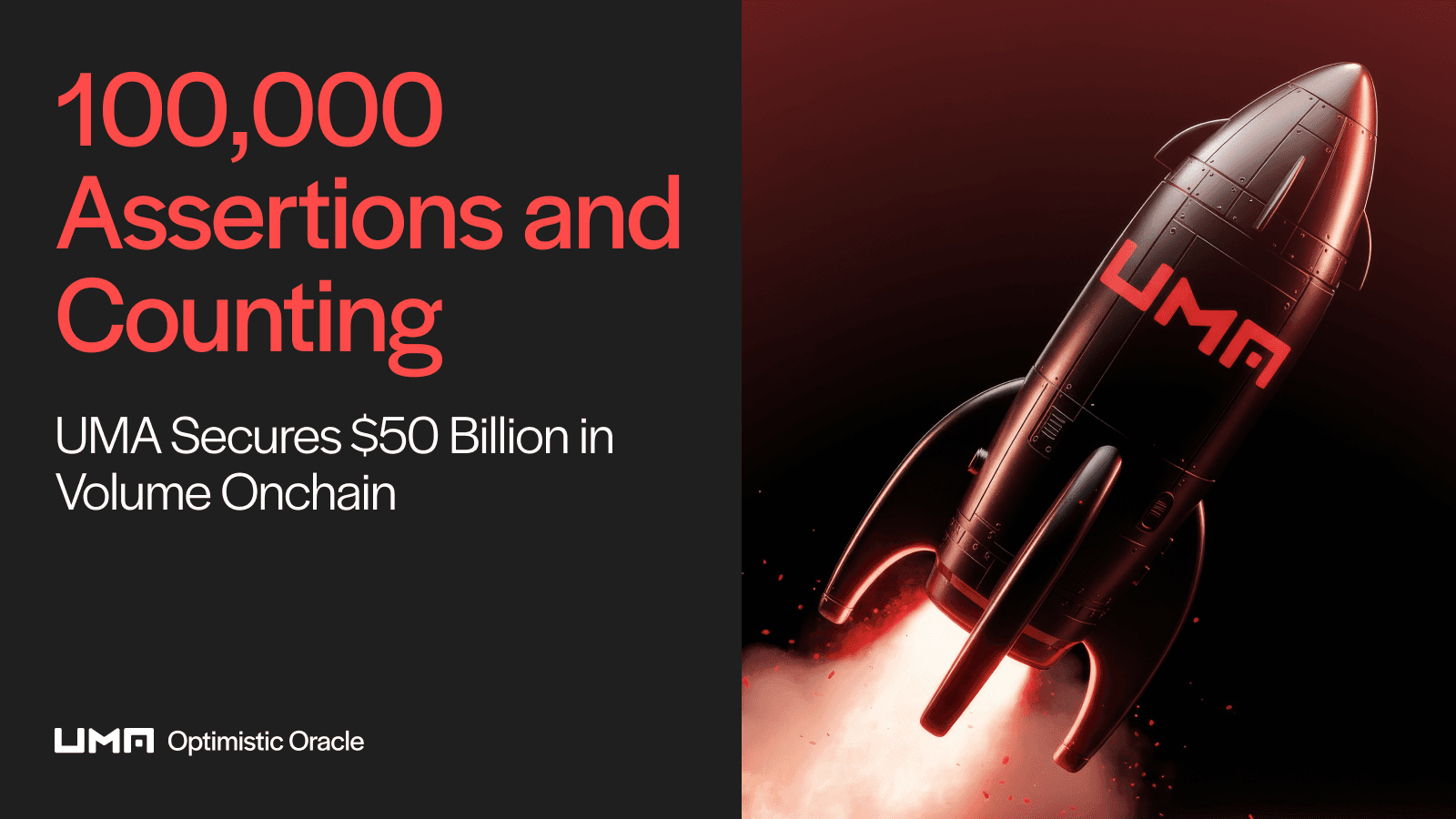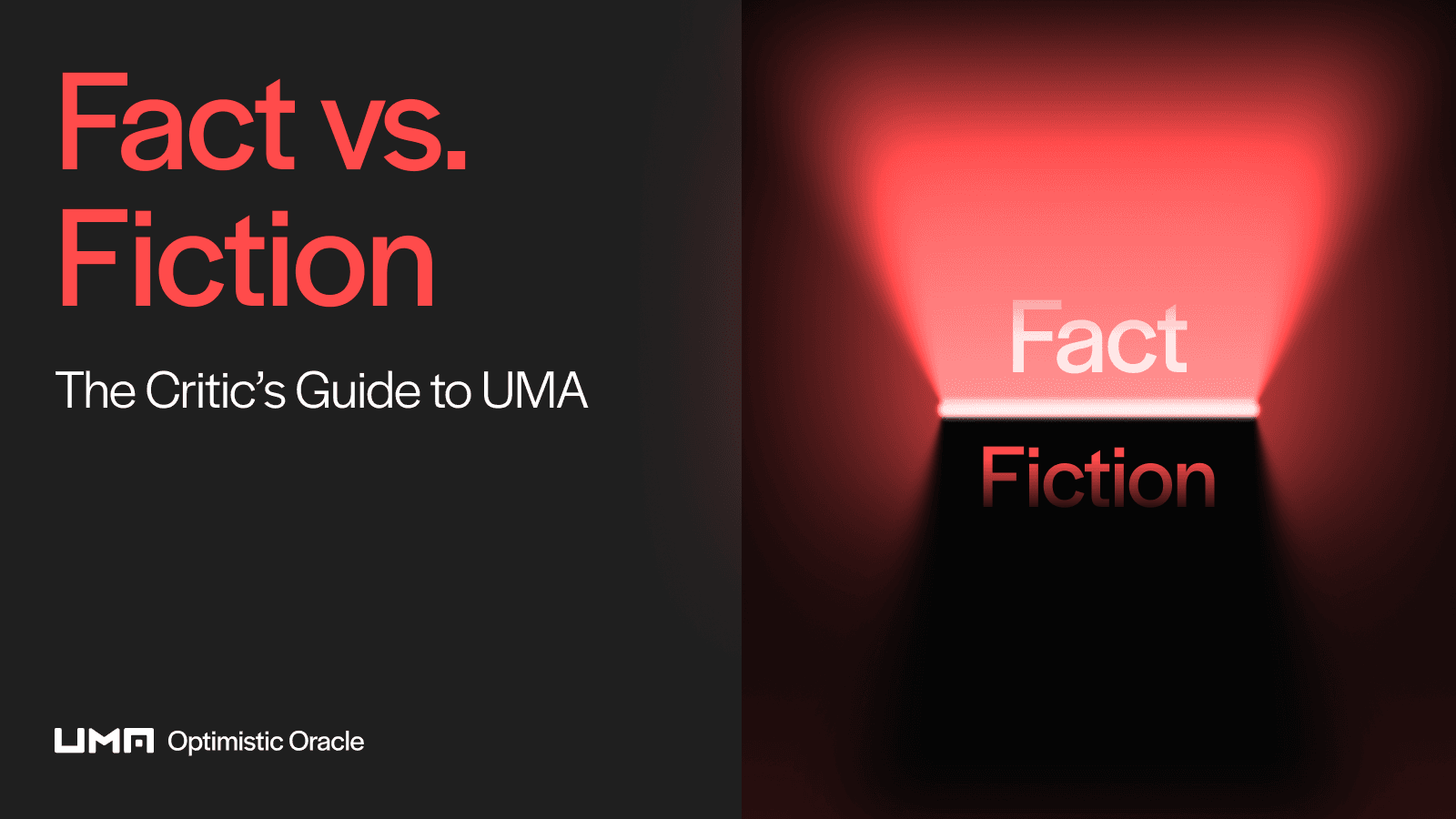Crypto promised us prediction markets. Is it delivering?
Throughout 2023, Risk Labs plans to increase its editorial output to include regular product updates, in-depth think pieces, and topical features covering the broader crypto industry. The aim is to support the growth of the space and the role UMA plays within it.
The first think piece covers a topic that’s long been of interest to UMA: prediction markets. In it, Risk Labs editorial contributor @dreamsofdefi explores Polymarket and other on-chain prediction markets to determine the state of the landscape today, and how UMA could support it in the future.
Key takeaways:
Decentralized prediction markets have the potential to solve the problems associated with traditional venues, but the space is still small.
On-chain prediction markets form a core part of the crypto ecosystem.
Market illiquidity remains the biggest issue for decentralized prediction markets, but Layer 2 developments should bring improvements.
UMA’s Optimistic Oracle is a powerful tool for prediction markets as it can verify natural language requests, as evidenced by Polymarket’s success.
If the market size grows in the future, optimistic oracles like UMA are the right type to support it.
Prediction markets have long held a place at the heart of the crypto ecosystem. Since Augur blazed the trail with Ethereum’s first initial coin offering in August 2015, on-chain trading on event outcomes has grown in popularity across multiple blockchain networks. Arguably the most successful decentralized prediction market today is Polymarket, the project on Polygon that lets Web3 users bet on current events in politics, culture, and more. UMA’s Optimistic Oracle has played a key role in Polymarket’s success. The OO uses game theoretical principles to find a Schelling Point for any outcome, which makes it a powerful tool for resolving Polymarket disputes. While decentralized prediction markets have evolved since Augur’s inception, the current landscape has some way to go to disrupt traditional prediction and betting-based markets. Still, recent developments in on-chain prediction markets show huge promise, hinting at a bright future for the space.
How decentralized prediction markets level the playing field
On-chain prediction markets have grown in part thanks to problems with their centralized alternatives. The online betting industry’s top companies use strategies like charging high fees, blocking successful accounts, and placing low maximum limit bets to maintain their edge and extract value from their customers. This asymmetrical relationship highlights the value of an open, trustless alternative. Prediction markets have also thrived because they are fun. On Polymarket, anyone with a Web3 wallet is free to bet on almost any event outcome, and they can even receive a financial reward if they’re right. Just as people discovered that NFTs were a fun way to show off their tastes in art, prediction markets are a fun way for them to bet on — and show off — their beliefs.
How the prediction market landscape looks today
As demand for on-chain prediction markets has grown, new projects focusing on different specialities have emerged. Polymarket has found product-market fit by supporting markets for a wide range of events, though its macroeconomic and political topics tend to attract the most liquidity (at the time of writing, its most liquid market asks “Who will win the U.S. 2024 Republican presidential nomination?”). Other markets have covered topics as far-ranging as COVID-19 infection rates, the Super Bowl winner, and the Best Picture winner at the Oscars.
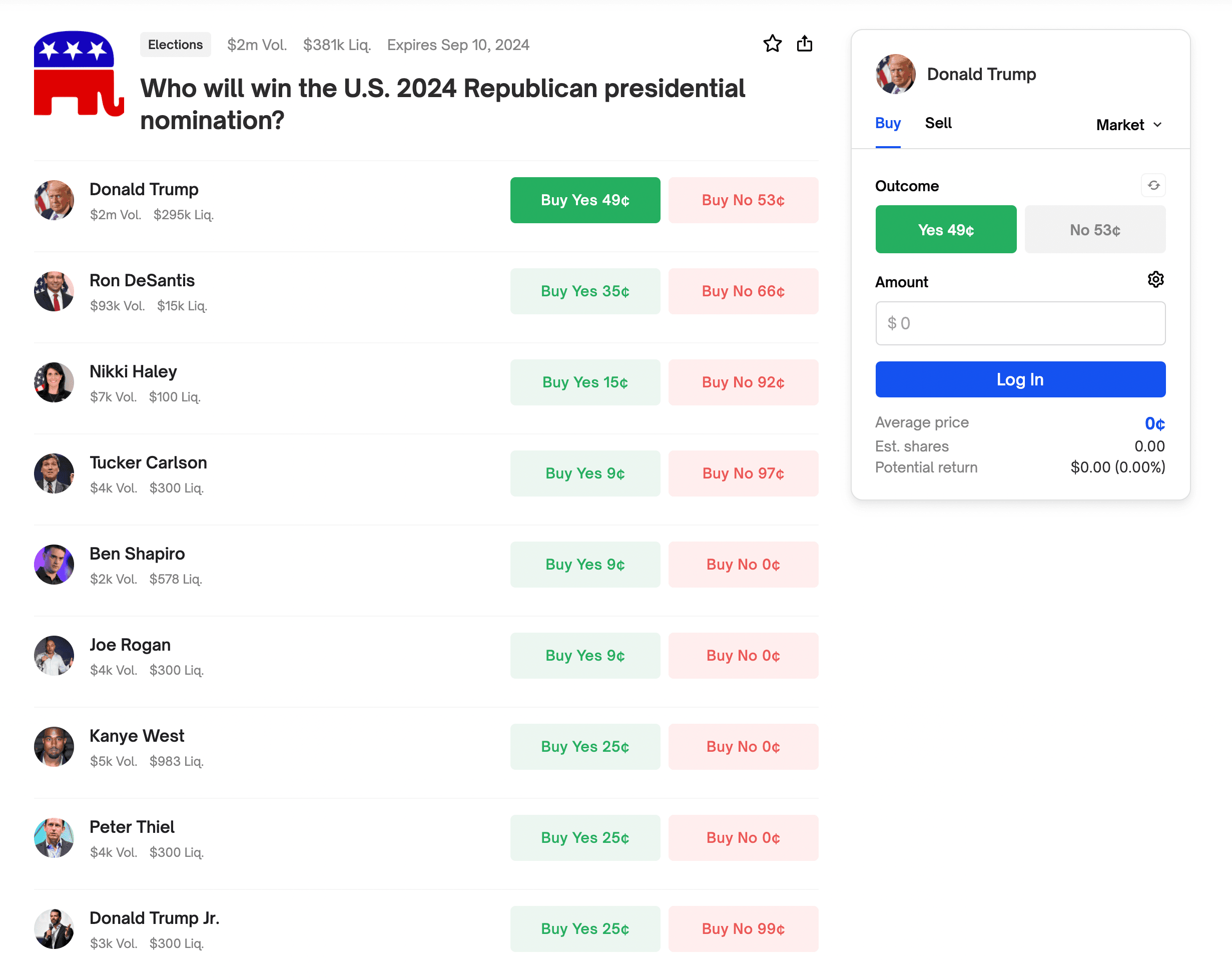
Sports betting is also a key focus for leading projects like SX Bet and Azuro’s bookmaker.xyz. According to data from Transparency Market Research, the sports betting industry was worth $279.5 billion in 2021. While decentralized sports betting is a small space today, it’s well-positioned to see huge growth if it can successfully take just a fraction of the sports betting industry’s market share. Similarly, markets for eSports have started to appear on projects like Overtime as the nascent industry has grown. Outside of geopolitical events, sports, and eSports, many markets allow traders to place predictions on the price of fungible cryptoassets like $BTC and $ETH. On PlotX, for example, traders can bet $PLOT tokens in rapid forecast markets to predict whether the $BTC/$USD price will move up or down within a set timeframe for a chance at winning pool rewards.
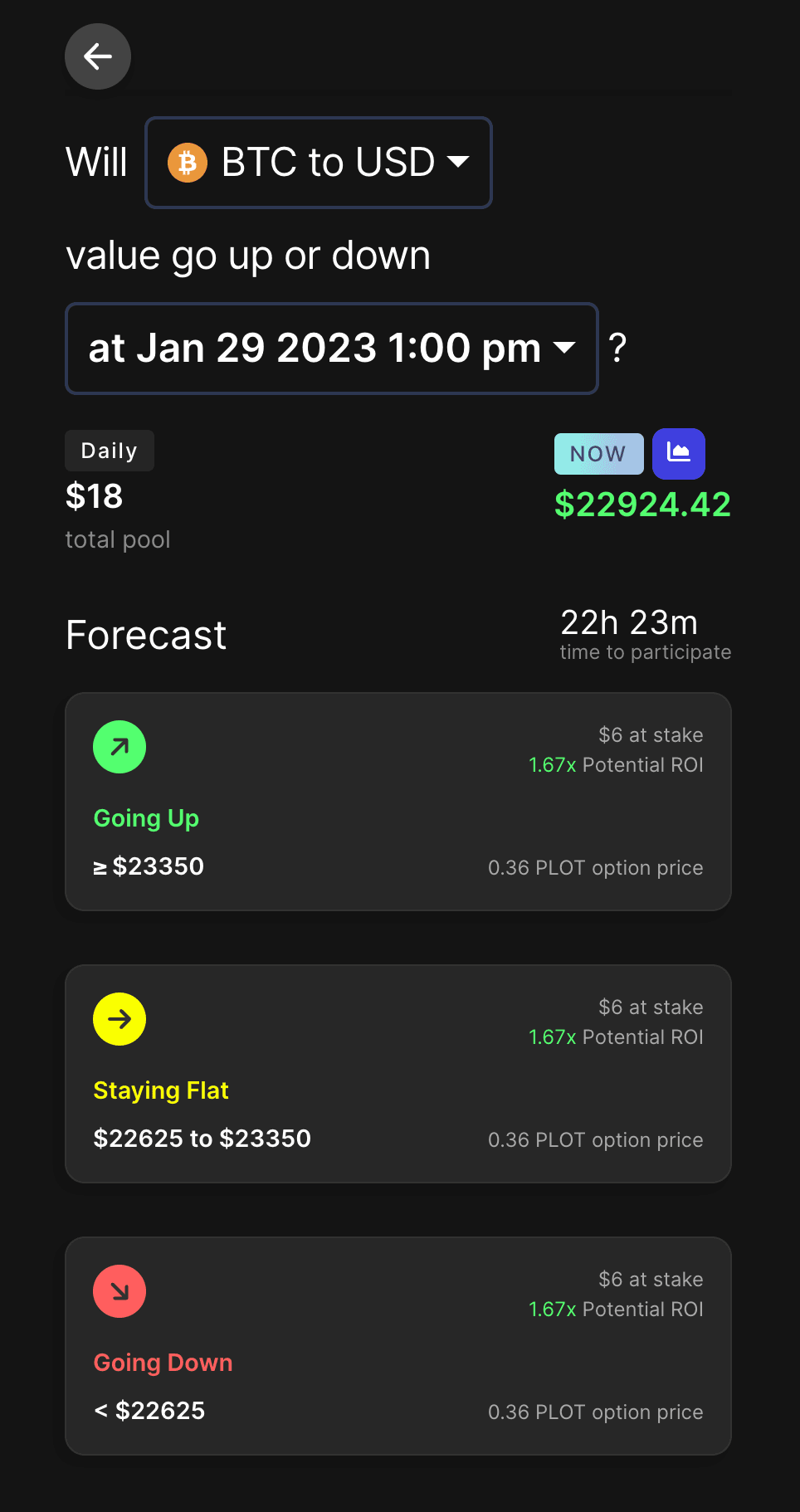
The top decentralized prediction markets have historically built on Ethereum-compatible Layer 2 solutions or sidechains to reduce costs, but they all slightly differ in design. Polymarket invites traders to buy and sell shares then redeem their winning ones for $1. At the time of writing, a $1,000 bet on Donald Trump to become the US President by May 31, 2023 yields a potential return of $33,333, while a bet against that outcome yields a potential $1,020 return (a “yes” share costs $0.03, while a “no” share costs $0.98).
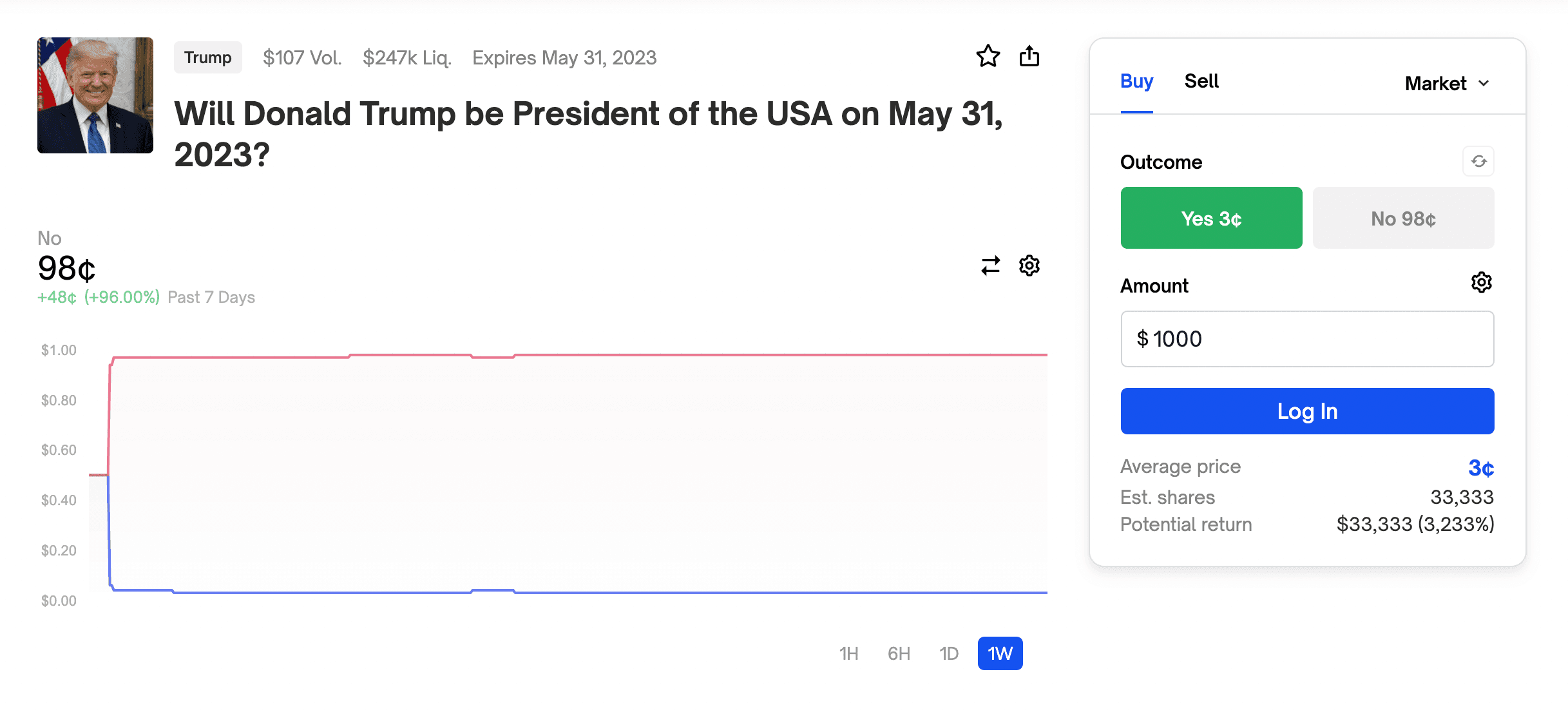
Polymarket’s design might be the simplest, but competitors have come up with smart alternative solutions for on-chain prediction making. Some have launched their own native tokens for incentivizing liquidity and rewarding users. Perhaps the most notable development in recent years has been an embrace of NFT technology. Key examples include the Gnosis Chain project Prode allowing traders to claim rewards if they hold an NFT for a winning bet, and Reality Cards, which describes itself as “the world’s first NFT-based prediction market,” paying out bet winners based on the length of time they held the market’s NFT for.
The benefits and drawbacks
Besides the various issues that plague traditional services, decentralized prediction markets have several obvious advantages. Funds get locked in smart contracts, so traders who predict correctly receive instant payouts. Users can often provide liquidity to markets in exchange for rewards, which creates an open, community-owned space rather than an opaque one guarded by gatekeepers. Decentralized prediction markets typically don’t ask for KYC details — users only need a funded Web3 wallet to participate in markets of their choice, a crucial user experience boon that should appeal to seasoned bettors and crypto natives alike. Plus, as all data gets recorded on-chain, all participants can see their funds have gone (and those who predict correctly get to flex their winnings).
While there are plenty of reasons traders may be drawn to decentralized prediction markets, today’s leading projects are still some way off achieving their full potential. This is because they are facing several big hurdles. By far the biggest issue affecting the space today is market illiquidity. As most markets are illiquid and trading volumes are low, the maximum available bid on any given market tends to be low. This creates a negative flywheel scenario; markets are illiquid because they have attracted few traders, and few traders are attracted to the markets because they are illiquid.
While Polymarket has asserted market dominance, the space has become more fragmented as new projects have emerged. Additionally, the available markets today remain limited in scope compared to their full potential. A soccer fan could head to bookmaker.xyz to bet on the outcome of Real Madrid vs Atletico Madrid on January 26, 2023, but there was no market available for Manchester City vs Arsenal the following day.
The on-chain prediction market space is yet to establish a Uniswap equivalent offering guaranteed deep liquidity across many different kinds of markets. The relatively high barrier to entry may also explain the modest liquidity found across on-chain prediction markets today. On-chain prediction markets require an understanding of Web3 wallets, bridging assets, and paying in specific tokens, skills that only a small group of crypto-native users are familiar with. There’s a global market of traders that place bets on their beliefs and interests every day, but if the space is to grow, it needs to become more accessible for everyone.
How can UMA’s Optimistic Oracle help prediction markets thrive?
UMA’s OO is a useful tool for powering prediction markets because it can determine any truth. The OO can verify any smart contract data, offering enough versatility to power markets predicting the next US President, the winner of this year’s UEFA Champions League tournament, Glastonbury Festival’s Saturday night headliner, and any other outcome.
As on-chain prediction markets often need off-chain data to arrive at an outcome, they frequently rely on oracles. For example, Overtime offers odds on sports fixtures, pulling data from the bookmaker Pinnacle via Chainlink’s price feed oracle. Chainlink is useful for establishing the price of real-world assets like the US dollar, which is why it’s gained prominence in the DeFi space.
UMA’s OO differs from Chainlink and other oracles in its ability to find the truth for any outcome. The OO’s game theory design establishes the correct answer and can solve gray area disputes when there is no categorical right or wrong case. A notable example of such a case landed in December 2022 when a dispute was raised over a Polymarket market on whether Volodymyr Zelensky had won TIME’s Person of the Year award. TIME had selected “Volodymyr Zelensky & the Spirit of Ukraine” as the Person of the Year; after a series of heated debates, $UMA token holders resolved the market to “YES.”
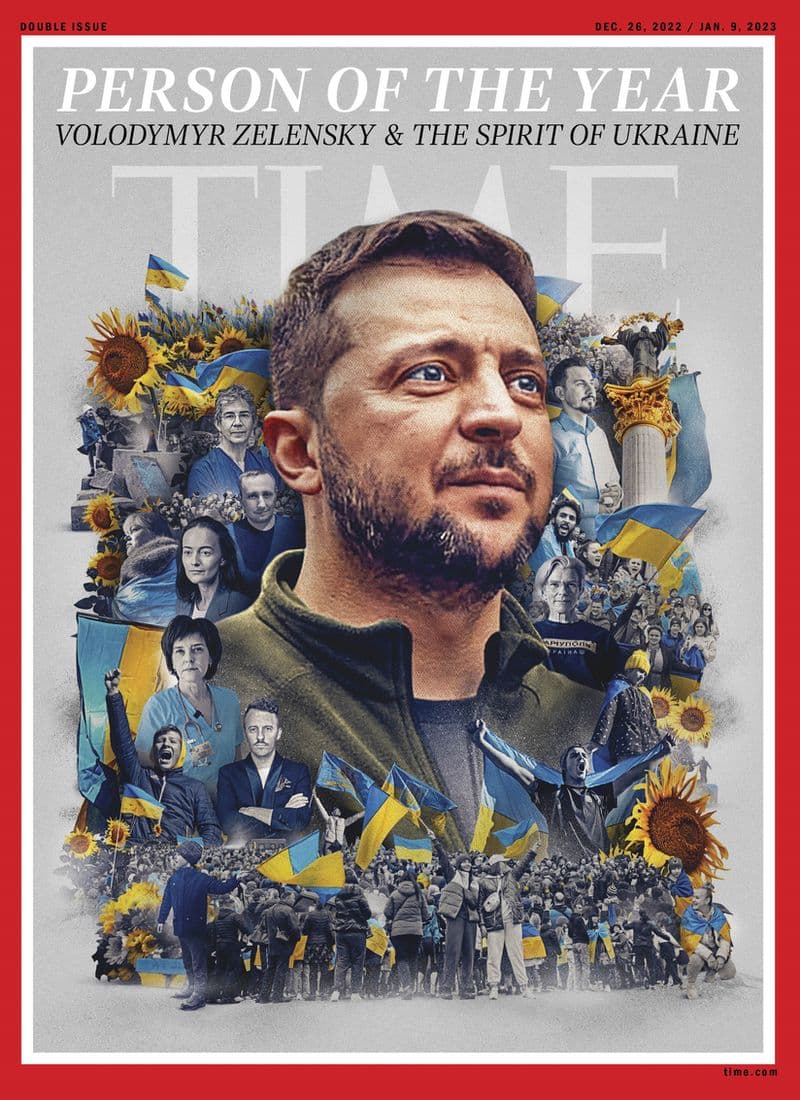
The future of on-chain predictions
Although it’s still early days for decentralized prediction markets, the emergence of new products and innovations shows that teams are building in anticipation of growth. One of the most popular products in traditional retail-focused betting markets is accumulator betting, where a bettor makes four or more selections and must be correct in all of them to win. Though accumulators were previously unused in the early days of on-chain prediction markets, Web3 teams like Overtime have recently taken innovative approaches to enabling their own parlay features.
While early prediction markets focused mainly on fungible tokens, NFTs have found a place in many of the most cutting-edge solutions on the market today. Tokenizing positions as NFTs offer new opportunities for traders, enabling reward claims, gamification, and social signaling. Given the sports industry’s embrace of NFTs in recent years, it seems likely that sports betting could follow once traditional users get to grips with Web3.
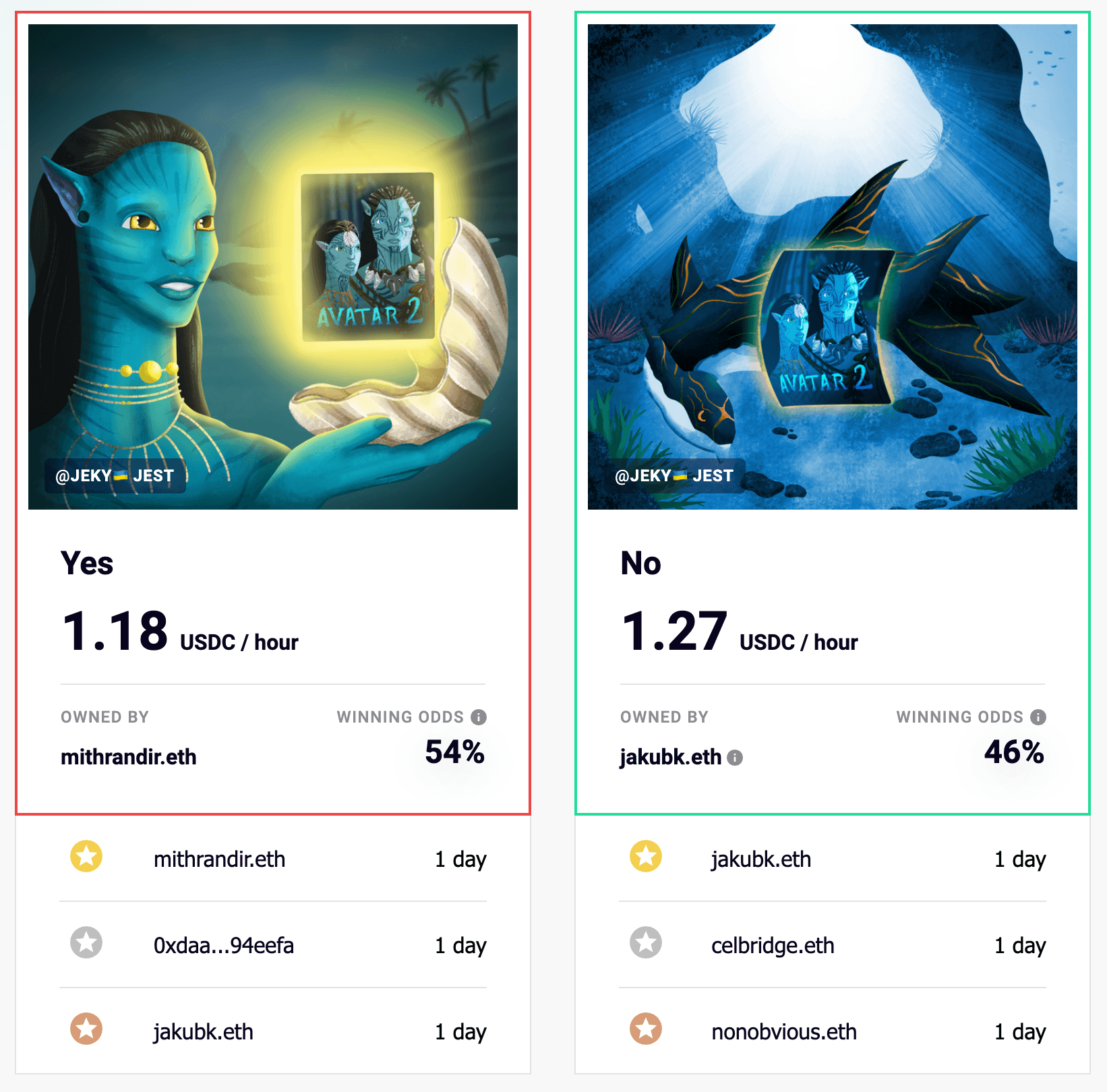
Alongside the growing popularity of NFT-based prediction market products, projects that integrate other social dynamics into their products will be well positioned to attract new users in the future. Polymarket currently allows social comments on its markets via Disqus, hinting at how the space could evolve to optimize for social interactions in the future. Market participants may soon be able to comment on predictions via their Web3 wallet address, and their wallet could hold NFTs of all their winning positions.Most on-chain prediction markets live on Gnosis Chain or Polygon today, but that’s likely to change as the Layer 2 ecosystem evolves. Thales Protocol has already teased plans to move to Arbitrum, and other projects will be incentivized to launch on the most liquid networks as they gain traction. If Layer 2 succeeds, prediction markets will move a step closer to solving their biggest issue. Across Protocol, a cross-chain bridge secured by UMA’s OO, is also a bet on Layer 2 as it can be used to transfer assets between Ethereum and its various scaling networks at high speed.Like decentralized finance, prediction markets will need sufficient decentralization to overcome regulatory hurdles. The traditional betting market is heavily regulated like the traditional finance system is, so it’s reasonable to assume that projects offering permissionless access to bet on any kind of outcome could face scrutiny as the space grows.
UMA’s role in the future of decentralized prediction markets
Decentralized prediction markets have not yet fulfilled their potential, but there’s good reason to believe that they can. The biggest problem facing on-chain prediction markets today is also one of the most solvable; once markets become more liquid, they should attract more users.Decentralized prediction markets currently occupy a niche corner of a niche space. But if the world decides that these products are useful, there is huge room for growth. In the future, decentralized prediction markets could offer more variety as they attract more users from different backgrounds — we could see markets emerge for almost any kind of event or outcome.As the decentralized prediction market space evolves, so will the number of disputes to settle. The nature of decentralized prediction making leaves event outcomes prone to discrepancies like TIME’s Person of the Year for 2022. While the house typically decides the outcome in such cases in the traditional betting space, decentralization offers a way for groups of humans to coordinate and find a Schelling Point when the answer is not obvious. As Web3’s oracle for determining any kind of truth, UMA is the right oracle to support the prediction market space as it grows.UMA is free to use and integrate. Get started at uma.xyz.
@dreamsofdefi is an editorial contributor at Risk Labs, the team and foundation behind UMA and Across.

